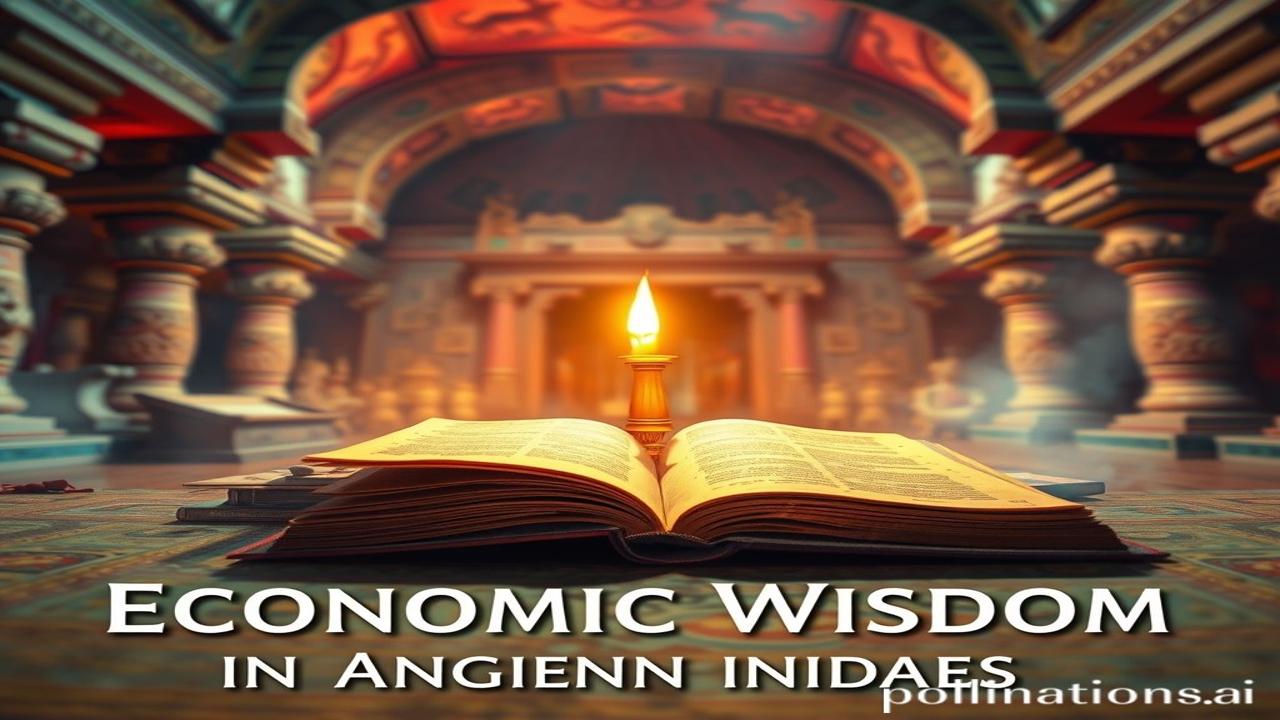Waqt Ki Reti Mein Chhupe Arthashastra: Unearthing Economic Wisdom from Ancient India
Kabhi socha hai, jo mandir ki ghanti aaj bhi bajti hai, jo haat bazaar ab bhi lagte hain, kya unme hamare purvajon ki koi aawaz chupi hai? What if the echoes of their economic principles still reverberate through our modern lives? Let’s embark on a journey to uncover the economic wisdom hidden within the ancient texts of India, a wisdom that’s not just historical, but surprisingly relevant even today.
Itihaas Ki Galiyon Mein: Economic Principles in Ancient India
Ancient India wasn’t just about spirituality and philosophy; it also had sophisticated economic systems. From the Mauryan Empire to the Gupta period and beyond, our ancient texts like the Arthashastra, the Upanishads, and even the Dharmashastras offer profound insights into wealth creation, management, and distribution.
The Arthashastra, written by Chanakya (around 3rd century BCE), is like a blueprint for a successful kingdom. It talks about everything from taxation and trade to diplomacy and welfare. Imagine, almost 2300 years ago, someone was already thinking about sustainable resource management and the importance of a strong economy for national security! This wasn’t just theoretical; it was practically applied in ruling empires. The Mauryan empire used these principles to build a vast and prosperous state. The economy of the Mauryan period was based on agriculture, trade, and industry.
And it’s not just about kings and empires. The Dharmashastras, though dealing with moral and ethical conduct, also outlined the duties of different professions, providing a framework for a stable and prosperous society. Think of it as a moral compass guiding economic activity. This helped create a harmonious balance between material pursuits and spiritual growth.
Zameeni Sach: Log Aur Jeevan
Let’s imagine a bustling marketplace in ancient Pataliputra (modern-day Patna). “Arrey bhaiyya, yeh resham kitne ka hai?” asks a merchant. “Das swarna mudra, par yeh sabse accha hai, Seedha China se aaya hai!” replies the silk trader. Mauryan coins clink in purses, artisans showcase their intricate carvings, and farmers bring their harvest to trade.
Life wasn’t easy. Farmers depended on the monsoon, artisans perfected their craft through generations of practice, and rulers had to ensure fair trade and protect their subjects. Imagine a farmer, weary from the sun, praying for rain, his family’s livelihood hanging in the balance. Think of the artisan meticulously crafting a sculpture, pouring his heart and soul into every detail. This was the reality of their economic lives, shaped by both prosperity and hardship.
The principles laid down in the Arthashastra were visible in the daily lives of the people. Taxation was fair, infrastructure was well-maintained, and there was a strong emphasis on welfare. This ensured that prosperity was not limited to the ruling class, but trickled down to the common folk.
Dharohar Aur Pehchan: Echoes in Modern India
Even today, you can see echoes of these ancient economic principles. Take, for example, the emphasis on dharma in business ethics. Businesses are expected to be socially responsible, contributing to the welfare of the community. This concept is rooted in the ancient understanding that economic activity should be aligned with ethical values.
The idea of sustainable living, so crucial today, also finds its roots in ancient Indian texts. Our ancestors understood the importance of living in harmony with nature and using resources responsibly. This is reflected in our traditional farming practices, our respect for natural resources, and our emphasis on a simple lifestyle. This understanding is not just relevant but crucial for a sustainable future.
Mazedar Tathya Ya Bhram-Bhanjak: Mythbusting Ancient Economics
Log samajhte hain ki ancient India sirf spirituality mein duba hua tha, lekin asli sach yeh hai that they had a very practical and sophisticated understanding of economics. The Arthashastra, for example, is a masterpiece of practical wisdom, offering solutions to economic problems that are relevant even today.
A shocking truth? Ancient India had a well-developed banking system! Evidence suggests that there were institutions that functioned as banks, accepting deposits, giving loans, and facilitating trade. These early banking systems played a crucial role in supporting economic growth.
Drishya Aur Bhavnayein: Sensing the Past
Imagine walking through the ruins of an ancient city. The air smells of dust and time, the sun beats down on the weathered stone, and the sounds of the marketplace echo in your mind. You can almost hear the voices of the traders, the artisans, and the farmers, bartering and exchanging goods. Feel the smooth surface of a Mauryan coin in your hand, a tangible link to a glorious past.
The temple walls, adorned with intricate carvings, tell stories of prosperity and trade. The aroma of spices fills the air, mingled with the scent of burning incense. These sensory experiences bring the ancient world to life, allowing us to connect with our heritage on a deeper level.
Antim Vichar Ya Uddharan: A Closing Thought
As we conclude our journey, let’s remember that the economic wisdom of ancient India is not just a historical relic, but a living tradition. It offers valuable lessons for us today, reminding us of the importance of ethical business practices, sustainable resource management, and social responsibility.
“धर्मो रक्षति रक्षितः” – Dharmo rakshati rakshitah. Dharma protects those who protect it. When we apply our ancient values in our economic pursuits, we not only create wealth but also build a just and sustainable society. Let’s strive to create an India that honors its past while embracing a prosperous and ethical future.
